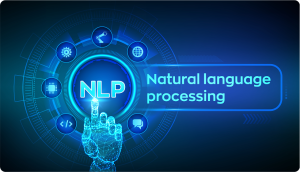
AI chatbots will help businesses save more than $8 billion a year by 2022, according to CNBC Report of chatbot statistics. Chatbots are not new but their capabilities are definitely expanding and automation and cognitive intelligence are making them more human-like every year. While these bots are making life easier for customers, from the business perspective, it is helping them to expand at a fast rate without having to depend on a corresponding increase in customer support staff.
These are the chatbot trends that will be dominating 2022.
Why are Chatbots becoming essential for businesses?
Chatbots are software applications that can communicate with people via live chat or other messaging platforms. Their user interface might be text-based, voice-based, or a combination of the two. The majority of chatbots nowadays are driven by artificial intelligence (AI), allowing them to deliver a more natural and customized user experience. Businesses with high customer engagement have found the advantage of using chatbots for customer interactions.
In 2022, Gartner predicts that 70% of white-collar workers will be interacting with conversational bots to speed up their work.
In 2022, Chatbots will go places that they have not gone before. From customer interactions, we will see these intelligent bots being adopted to a greater extent into the workplace. In 2022, Gartner predicts that 70% of the white-collar workers will be interacting with conversational bots to speed up their work. For instance, if Martin usually went through a 6-step process to retrieve specific files for a project, all he needs to do now is speak or text the chatbot to retrieve the file. The bot will do the searching and come back with relevant files – easy peasy isn’t it?
Top Business Chatbot Trends in 2022
Artificial intelligence (AI) is revolutionizing chatbots by mimicking human thinking and decision-making. According to Gartner, by 2022, AI will manage 70% of all consumer contacts. But it is not only customer service, as mentioned before, a slew of new trends will make their presence felt in more business processes.
Trend #1: Chatbots will handle more payment processes
Chatbots for customer service will find options to include payment alternatives. It will be as simple as a customer texting “I want to buy the latest iPhone” on an e-commerce site and the AI chatbot would guide them through the process of selection, until the final payment. When a user submits a request, the bot will issue an API request and provide a payment link to complete the transaction.
More bots will be connected with payment systems such as Paypal, digital wallets, and other payment gateways in 2022, allowing users to make payments without ever leaving the messaging platform.
By connecting with the payment infrastructure, businesses can provide chatbots with enough data to encourage conversation-driven upselling to consumers. The same may be utilized to offer updates on a user’s transaction data, payment confirmation, expense records, and so on, resulting in a high level of user confidence and retention.
Trend #2: Voice Bots
Voice Bots are definitely the next game changer!
According to a Forbes article, voice searches will account for more than half of all queries by 2022. Digital users prefer messaging services with voice and text-based interfaces. “Ok Google, what’s on my schedule today?” is a common way for users to start their days.
It’s all about giving your customers a seamless experience with your company, and voice bots can help you do that.
With increasing human reliance on these bots, there is growing adoption of voice-enabled chat functionality particularly in industries such as insurance, tourism, and education. Natural Language Processing (NLP) also works with different dialects and is empowered with intentional pauses of human speech. We are all familiar with Siri, Alexa, and Google and how much more human they sound over the years.
While chat (text) is more popular in the emerging markets, Europe and North America will continue to have ‘voice’ as the largest contact channel preferred by users.
Virtual assistants that use voice capability, differ from the technology used for chatbots. Voice bots require speech recognition and speech synthesis ability. Voice bots, need to understand the speaker’s intent, convert it into text for processing, and then deliver a vocal response back – all in a matter of seconds.
Trend #3 Bots that are more humanlike
Chatbots that are becoming more “humanlike” are already widely used. In fact, many of the messaging customer support platforms are manned by conversational AI bots and customers often are unaware that it is not a human on the other side. According to forecasts, companies will construct emotional intelligence bots to add soft skills to make bots show more “empathy”.
To interpret human emotions, chatbots may now be linked with sentiment recognition technologies. As a consequence, a chatbot may now respond depending on the emotions of clients. “How may I assist you?” may change to “Hi, we get where you’re coming from” using emotional intelligence.
Chatbots are expected to become more cognizant of a customer’s emotional condition in 2022, going by industry prediction. As a result, we expect that businesses will develop chatbots that respond to consumer demands or questions depending on their emotion as identified by sentiment-reading software.
Trend #4: Intuitive Analytics and Deep Insights with Chatbots
Here is more chatbot statistics – An Accenture report highlights that 56% of businesses claim chatbots are driving disruption in their industry with their amazing analytical capabilities. It’s impossible to properly envisage user behaviors and experiences without a deeper integration of AI chatbots in business processes. 2022 shall be a great year to release chatbot analytics and insights since nearly all company operations are shifting to chatbots.
These chatbots keep a track of the questions asked, the responses provided, and the requests forwarded to agents. This data may be used by businesses to enhance services in real-time.
In 2022, chatbots shall be more equipped to precisely measure and assess important search keywords, preferences, and satisfaction using chatbot analytics and insights, allowing businesses to create deeper ties and connections with customers.
Trend #5: Multilingual chatbots
Let us assume you speak Italian and are not too fluent in English. When you are conversing with a chatbot, would you not prefer the option to choose a language you are comfortable in to explain your query and get a reply in the same language? Chatbots that do this will get instant positive reaction for businesses that employ them.
Businesses are realizing the importance of multi-lingual chatbots to improve their localization efforts and broaden their reach. Even if you are based in the US, you are likely to want customers from all over the world. NLP chatbots (natural language processing) will be equipped to automatically identify the user’s language or even use the IP addresses to identify the geographic locations.
That is why in 2022, we are expected to witness a rapid rise in businesses adopting multilingual AI chatbot capabilities. Every social networking platform will sooner rather than later jump on board.

What does the near future for business chatbots look like?
Chatbots that are carelessly placed will vanish in a fast-developing conversational AI industry. Only those that have been carefully designed and deployed across all channels will be able to survive.
Millions of users will prefer voice-enabled conversational AI to interact with businesses across all digital platforms. Furthermore, different chatbot apps will no longer be isolated. Businesses might establish a chatbot intranet where they could exchange information and collaborate easily. Meanwhile, AI chatbots will continue to increase user engagement and improve customer service.









